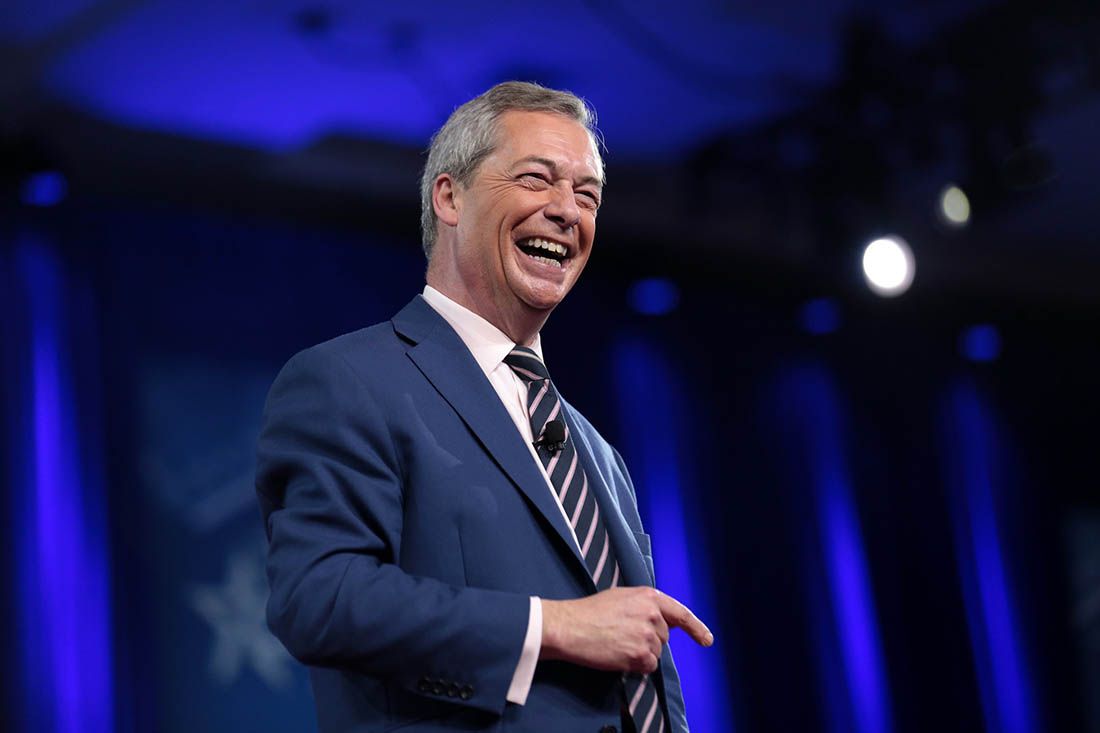
Pound-Dollar Week Ahead: Falling Into Fibonacci's Arms but Brexit Has Been Scrawled on Sterling’s Wall
by James Skinner-GBP/USD nears 200-day average, could fall into Fibonacci’s arms.
-But technical damage is done & with “Brexit” written on GBP’s wall.
-GBP fall, EUR stall and JPY lift USD with U.S. election on horizon.
-Dollar Index correction could build this week & have legs to endure.
- GBP/USD spot rate at time of writing: 12796
- Bank transfer rate (indicative guide): 1.2448-1.2538
- FX specialist providers (indicative guide): 1.2604-1.2681
- More information on FX specialist rates here
The Pound-to-Dollar exchange rate could stabilise at nearby levels in the days ahead after an escalation of ‘no deal’ Brexit fears and Sterling’s worst week since March lifted the Dollar Index, although with Brexit again scrawled over the British currency’s wall, further losses may also be likely sooner or later.
Pound Sterling fell close to four percent against the Dollar after the government sought through its Internal Market Bill, a mechanism through which it could ‘clarify,’ override or disapply terms of the EU Withdrawal Agreement.
“We still see a 30% chance of a deal. But the current conflict makes it even more difficult for the EU to soften its position on contentious state-aid, fisheries and dispute settlement issues. In addition, the EU may be less willing to agree to many stopgap measures to soften the blow of a hard exit on 31 December. As a result, the “semi-managed” hard exit – which is our base case with a 50% probability – may be less managed and more disruptive in early 2021,” says Holger Schmieding, chief economist at Berenberg.
Johnson's gambit will in the government's own words, "breach international law," but is intended only as “a legal safety net designed to protect our country against extreme or irrational interpretations” of the new EU treaty after Brussel's interpretation of it alarmed London.
The Pound-to-Dollar rate was fast approaching its 200-day moving average at 1.2735 and the 38.2% Fibonacci retracement of its March-to-September recovery trend on Friday, either or both of which could offer temporary support to the British currency, although analysts remain bearish in their outlooks.
“Johnson has a reputation for U-turns and a sometimes cavalier respect for facts rather than for a grasp of detail. The EU has de facto given the UK until the end of September to abandon the idea of breaching the Northern Ireland protocol of the divorce treaty. Just like Johnson made a big concession at almost the last minute in October 2019, he may still do so again," Schmieding says.
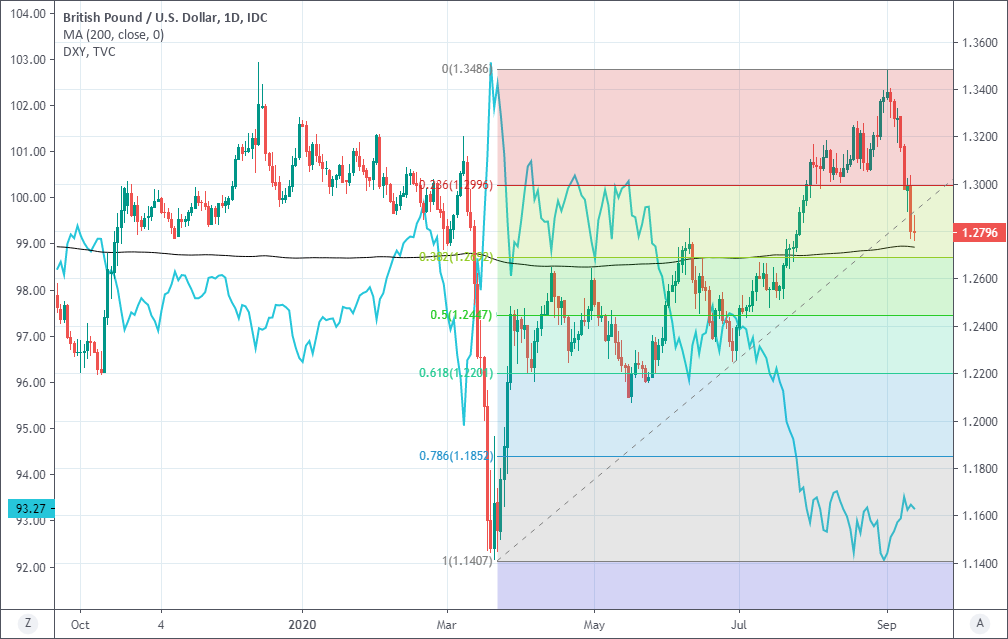
Last week’s losses for Sterling handed the Dollar Index, which the British currency is nearly 12% of, its second weekly advance following a bruising summer for the U.S. unit.
“GBP/USD has taken out the 55 day ma and uptrend support at 1.2883 and is approaching the 200 day ma at 1.2735 and Fibo support at 1.2691. While this may hold the initial test, it is now exposed and near term risk is on the downside,” says Karen Jones, head of technical analysis for currencies, commodities and bonds at Commerzbank, who suggested last week that clients should sell the Pound-to-Dollar rate when it was trading around 1.2880. “Failure here will target 1.2445 and then 1.2250/00.”
This tentative recovery in the Dollar Index wouldn’t have been possible if Europe’s single currency hadn’t met pushback from the 1.20 level as a result of European Central Bank (ECB) concerns about strength in exchange rates and Sterling’s losses, which lifted the trade-weighted Euro exchange rate.
If weakness in Sterling continues to lift the trade-weighted exchange rate, it could undermine the Euro-to-Dollar rate that swum out into deep water with a ball and chain around one of its ankles, which would mean the Dollar Index correction of the last fortnight endures as the November presidential election comes onto the horizon.
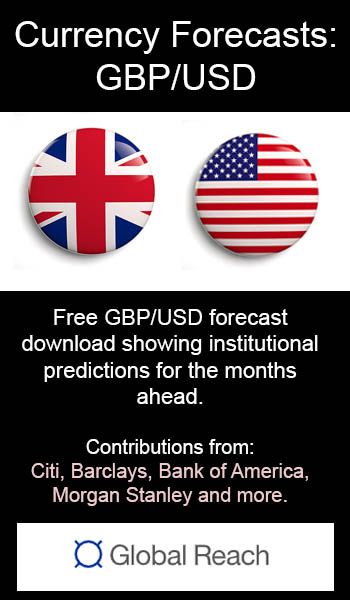
Analysts have warned of more downside if the Brexit talks continue to sour.
In addition, the U.S. Dollar has a well established history of appreciation ahead of presidential elections while President Donald Trump’s polling disadvantage has recently eased, although none of the widely cited polls gave him much if-any chance in 2016, while any weakness in the Yen would further bolster the greenback as Japan’s currency accounts for 13% of the Dollar Index.
“EUR failed to hold on to initial gains post the ECB press conference – we believe for good reason,” says Lee Hardman, an analyst at MUFG. “The GBP is set to remain under downward pressure due to UK-EU trade uncertainty and a darkening economic outlook although the BoE may persist with its overly optimistic outlook following its meeting next week... we expect the GBP to weaken further and for volatility to increase as Brexit developments are likely to get worse before they get better. Based on past performance, cable could quickly fall back to the mid to low 1.2000’s."
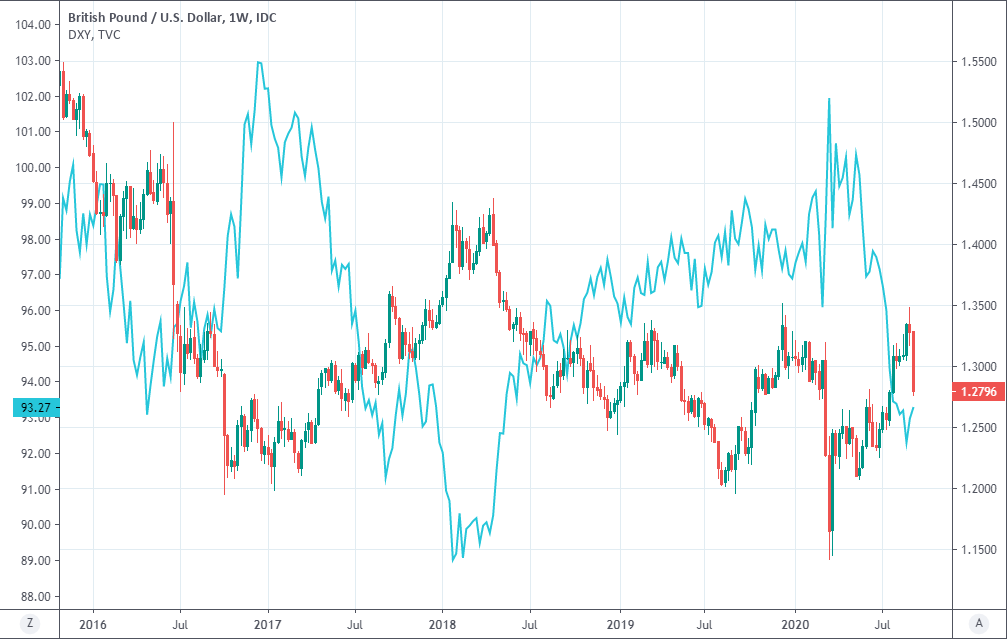
Other important influences on Sterling in the week ahead include Wednesday’s Federal Reserve monetary policy decision and press conference followed by Thursday’s Bank of England (BoE) briefing. Hardman and the MUFG team anticipate that will eventually announce a policy of explicit caps for U.S. bond yields now that it’s interest rate is at zero and the bank has shifted to an average-inflation-targeting regime that allows for inflation to rise above the 2% target for as long as it sits under it over the years.
“We look for the Fed to shift its rationale for asset purchases from supporting market functioning to promoting recovery. The duration of purchases may also increase,” says Michael Gapen, chief U.S. economist at Barclays. “The window for passing additional fiscal support prior to the election is rapidly closing. Core CPI posted a second-consecutive strong increase...but soft shelter readings raise concerns about the longer-term outlook.”
This Wednesday’s 19:00 Fed announcement isn’t expected to disrupt the tentative Dollar Index rebound, nor is Thursday’s 12:00 BoE decision, where consensus is looking for Bank Rate to be left at 0.10% and for the quantitative easing programme target to be left unchanged at £745bn.
Many anticipate that the BoE will not act again until November, after the next budget, when it will know more about whether or by how much it has to support government bond market with new quantitative easing.
“Brexit developments heated up this week. We still expect a minimal FTA to be agreed, but maintain that no-deal does not carry sizeable incremental downside. GDP had recovered half of virus-related lost output by July,” says Fabrice Montagne, chief UK economist at Barclays. “We do not expect any changes in policy at next week’s MPC meeting but the committee is likely to become less optimistic on the outlook.”
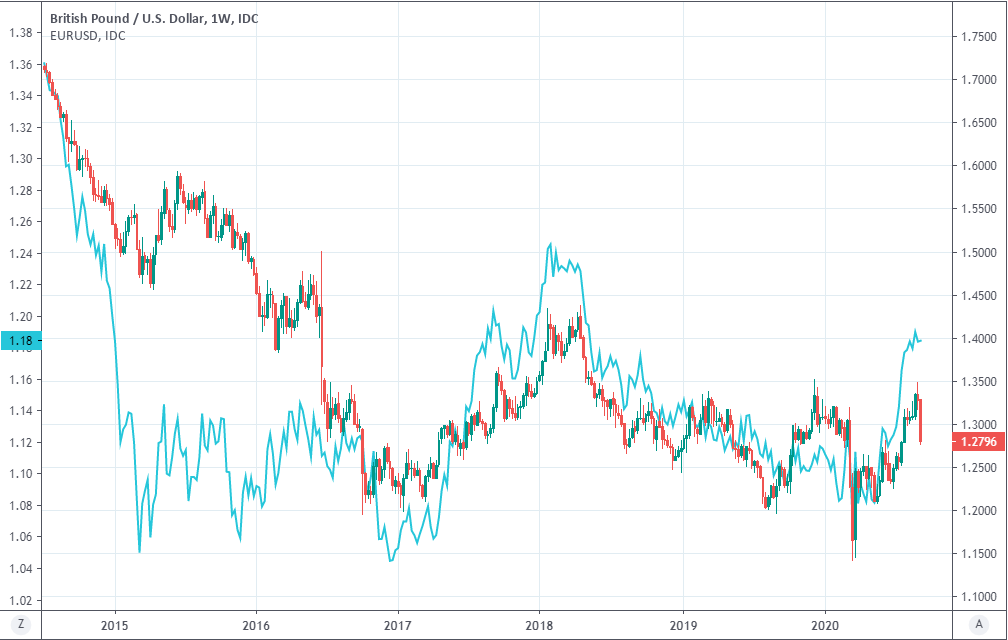

Achieve 3-5% More Currency: The Global Reach Best Exchange Rate Guarantee maximises your currency purchasing power. Find out more.

Brexit Helpline: Free one-on-one financial, currency, pension and legal guidance and preparations for 2021.
Find out more

Invest in Spanish Property. A selection of discounted properties due to the covid-19 crisis, online viewings and transactions possible. Download the guide. Download the Guide